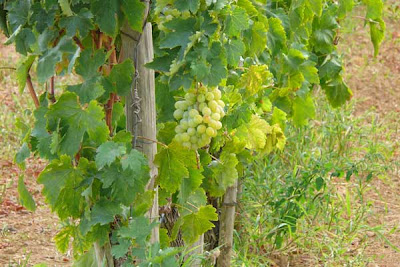What a hectic week! In the last eight days we have been three times to the Castro Verde area, twice to Sagres and Cape St Vincent, we've been to Foia, the highest point in the Algarve, we've made four visits to the ringing team at Vilamoura, there were mornings at Castro Marim and Ludo and we've also spent a couple of hours looking for a Yellow-browed Warbler near Silves. Of course, we haven't both been to all those places, once or twice we've headed off in different directions, but we've certainly kept busy.
As we have remarked before, every trip to the Castro Verde area is different. Great Bustards, Little Bustards, Black-bellied Sandgrouse and various raptor species are the main targets but at this time of year some of them are quite difficult to find. We've been reasonably successful but two particular highlights stand out: the return of the first Common Cranes of the autumn, a party of 28 birds seen on Wednesday, and then, yesterday, one of the best views we've had of a perched Spanish Imperial Eagle, an adult on top of a small tree seen well through the 'scope. With flocks of larks, Meadow Pipits and Corn Buntings everywhere and increasing numbers of Northern Lapwings the change of season is very evident in the Alentejo.
 Great Bustard - as many as 50 seen some days but never as near as you would want them.
Great Bustard - as many as 50 seen some days but never as near as you would want them.At Cabranosa, the raptor watchpoint near Sagres, there have been reports of at least eighteen raptor species this week, amongst them Lesser Spotted Eagle (which we missed) and Rüppell's Griffon (which we did see). Red Kites have been in unusually high numbers but the main spectacle has been the gathering of Eurasian Griffons with more than 600 birds seen some days.
 Eurasian Griffon
Eurasian Griffon Eurasian Griffons - just a few of the 600 or more
Eurasian Griffons - just a few of the 600 or more Rüppell's Griffon - now seen annually in the Algarve
Rüppell's Griffon - now seen annually in the Algarve Red Kite - 50 or more were present on Monday
Red Kite - 50 or more were present on Monday Short-toed Eagle
Short-toed EagleWe also saw Griffons from the top of Foia, above Monchique, where Montagu's Harrier, Blue Rock Thrush, Ring Ouzel, Woodlark and Dartford Warbler were the main highlights. The views from up there at just over 900 metres are spectacular.
The ringing activity at Parque Ambiental has already had some coverage with the previously reported Common Yellowthroat being the obvious star of the show. However, it was followed by two Common Rosefinches, probably the seventh and eighth records for Portugal, both of which we managed to miss in spite of our four trips to Vilamoura! The whole place seemed to be full of birds and its importance as a staging post for migrants and a wintering site for quite a number of species can't be overstated. As well as the ringing we had multiple sightings of Booted Eagles, Black-winged Kites and Marsh Harriers and we also enjoyed seeing a tiny Soprano Pipistrelle in the hand. Thanks, once again, to Fergus Henderson and his team for sharing news of their remarkable captures.
 Penduline Tit
Penduline Tit Grasshopper Warbler
Grasshopper WarblerBoth Castro Marim and Ludo provided the usual quality birding that we expect at these sites. Booted Eagles and Black-winged Kite are always popular at Ludo; Little Bustards continue to be much easier to find at Castro Marim than they are in the Alentejo!
Next week we're planning to be a bit more relaxed!

 Two unusual views of the ETAR at Vilamoura - a hide here overlooking the water treatment works would be popular
Two unusual views of the ETAR at Vilamoura - a hide here overlooking the water treatment works would be popular It's heading straight for us!!
It's heading straight for us!!

















































